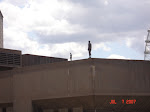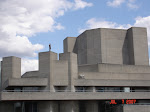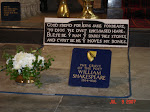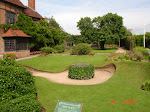We took an early boat from Savoy Pier to get to the National Maritime Museum and then went on to the Royal Observatory. Tonya Kirk greeted us at the Caird Library in the National Maritime Museum and gave us a little background before passing us on to the next speakers. The main library is open only to those who are sixteen or older, but any age can do research at E-Library on the computers. The library offers weekend story times to children and there are also some children's books in the E-Library area. When I looked through the collection, I was thrilled to find a copy of Susan Cooper's Victory, a fantasy that steps back in time and features a young man who served with Admiral Lord Nelson on the Victory. It made me wonder if Susan Cooper had actually visited the National Maritime Museum when doing research for Victory.
We got to see several interesting items including an Atlas owned by British pirate Basil Ringrose, Royal Naval Ship The Pearl's log which recounts the capture of Blackbeard, and the merchant log from a slaving vessel whose captain, John Newton, had a religious experience and became anti-slavery and ended up writing the hymn "Amazing Grace." We saw letters signed by Charles II and written by Samuel Pepys, as well as letters from Admiral Lord Nelson to his wife and to his mistress, and quite a few items about the Titanic.
Our afternoon visit to The Royal Observatory was equally impressive, but the thing that I liked most about the whole day was finding a copy of Louise Borden's Sea Clocks in the gift shop at the National Maritime Museum. Louise Borden is a terrific author of children' books who does lots of research and travel to gather primary source materials when she gets an idea for a book. She lives in Terrace Park, (Cincinnati) Ohio and does wonderful presentations for school children. The discovery of her visit to the National Maritime Museum was just as exciting for me as seeing the marker for the Prime Meridian at the Royal Observatory.
Subscribe to:
Post Comments (Atom)







No comments:
Post a Comment